Ehretia Tree and the Birds of Delhi
Ehretia laevis (Charma-Vriksha, Chamror/d or Bhairi) is a relatively common tree found in Delhi and is well known in traditional and folk medicines of India. This apparently unassuming tree gets noticed when it is covered in small starry-white flowers and subsequent bright orange fruits in March-April.
While strolling in Jahanpanah Park a few years back, I first noticed this tree while witnessing a Red-vented Bulbul enjoying its orange fruits. Thereafter, I have tried to spot this medium-sized tree during the month of March-April and found an astonishing number of birds thronging the tree in its fruiting stage.
Ehretia is not an avenue tree in Delhi but as it is a native tree of the Aravallis, careful planting of this species in the parks and gardens will be a boon to birds, not to mention the birdwatchers.
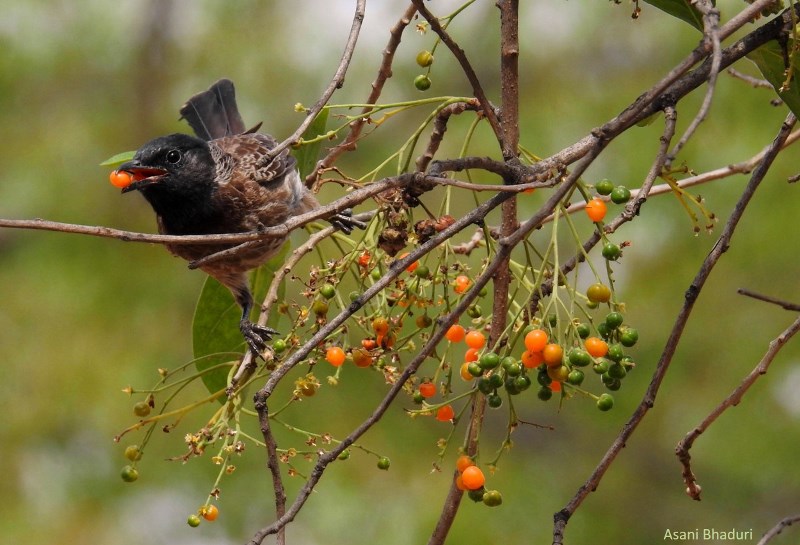
The Red-vented Bulbul of Jahanpanah which introduced me to Ehretia.
The birds that love the fruits of this tree are the Bulbuls. Both the aggressive Red-Vented Bulbuls and the relatively shy Red-whiskered Bulbuls take their turns on its fruity snack.
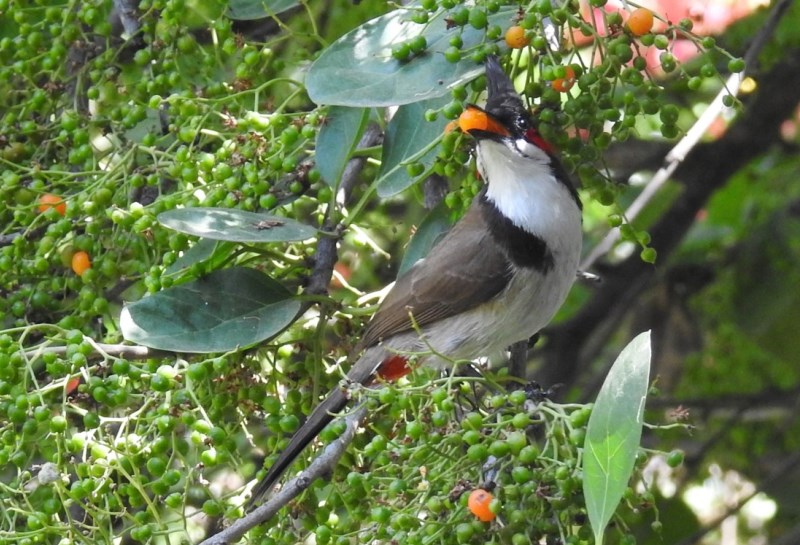
The Red-whiskered Bulbul comes for a micro-second to catch a few fruity-orange and swiftly goes back to its den.
The fruits are initially green, turning bright orange and if the birds leave a few then wrinkle into black. Although most birds prefer the orange version, parakeets and squirrels do not spare the green ones either. I have not seen any bird to savour the blackened fruit, although squirrels – well they are squirrels.
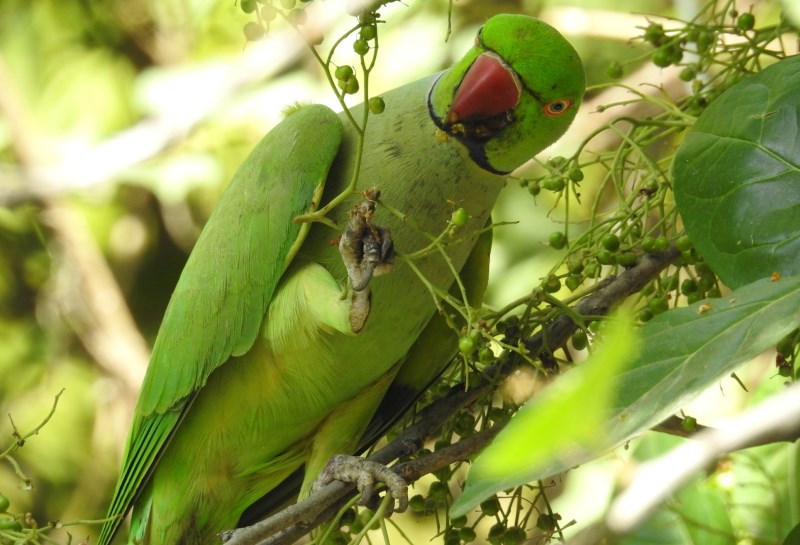
A Rose-ringed Parakeet tearing up a fruitful (?) twig and not sparing a single one.
The Barbets are commoner too, although I have only once seen Coppersmith Barbet in the tree and in the non-fruiting season. The Brown-headed Barbets are the ones preferring this tree and often indulge in plenty while hiding in the leaves through their camouflage green.
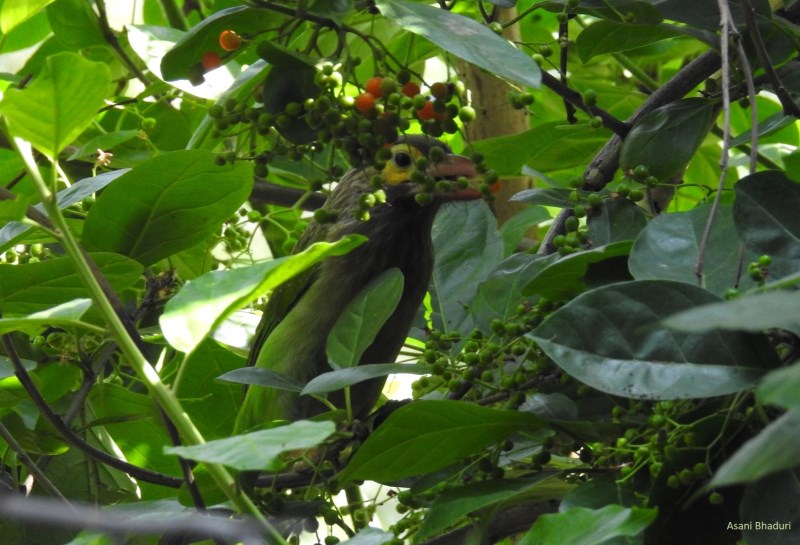
The Brown-headed Barbet couldn’t beat the Birder.
However, I was surprised with the three-musketeers – The Crow, The Common Myna and the Jungle Babblers. Least expected to love this fruit, they often fight for the best spot on the tree – that is the branch which is most orange.
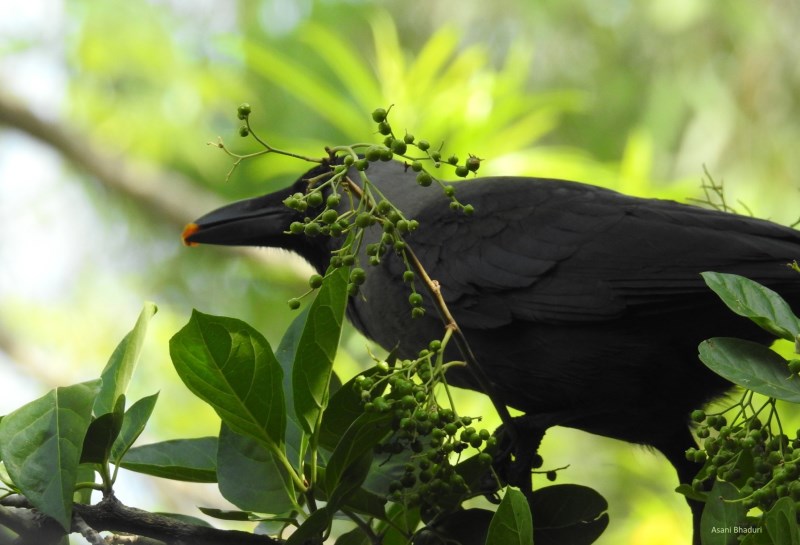
The Crow having a tough time to pick the tiny fruit by the big beak.
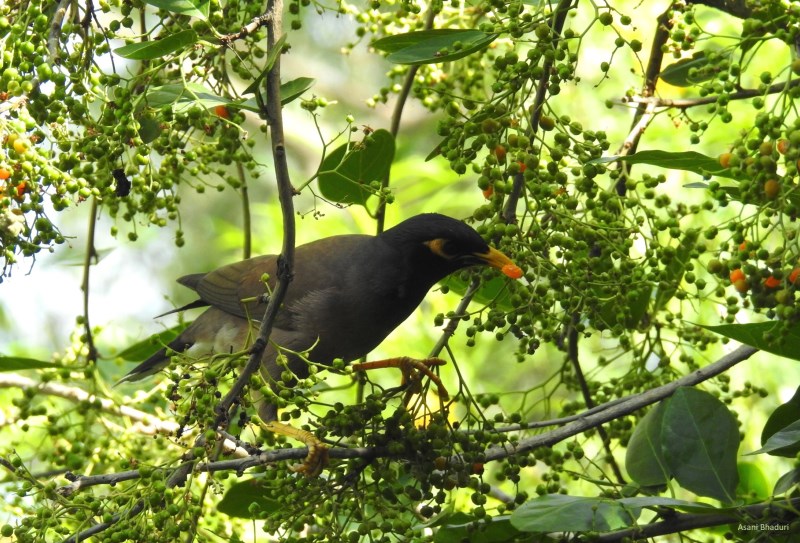
As usual the common Mynas are bold and often even scares the squirrels.
For the seven-sisters, it is tough to observe the behaviour with all the hullabaloo. However, I have often seen a few together in a tree with one guarding the front and others chomping the treasure.

You better watch us Boy – We are the Babbler Sisters.
In all the cacophony, doves come in quietly, avoiding any fight and often in the quiet afternoon-evening. The Laughing Dove and the Collared Dove have given me darshan in Chamror branches although the former is the frequent flyer. There is one Laughing Dove which often visits the Datranga (yes, that’s another name of the tree) near my current residence at Ashok Vihar.
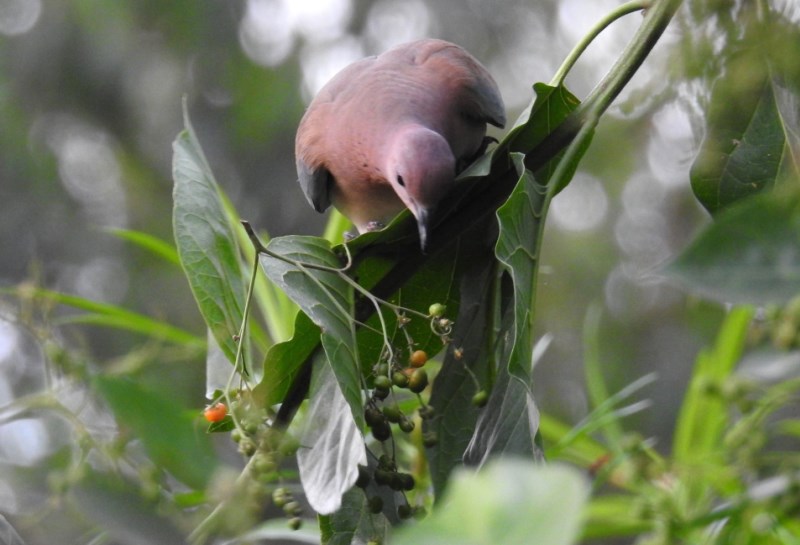
All quiet on the Laughing Dove front.
Enough about the big boys, what about the small ones? The Purple sunbirds love the star-shaped white flowers with a mild fragrance and Tailor-birds often roam the tree for Bird-knows-What. The Oriental white-eyes though are a sight – working hard to grasp the fruits with their tiny beak – and often crushing(?) the juicy pulp before swallowing the same.
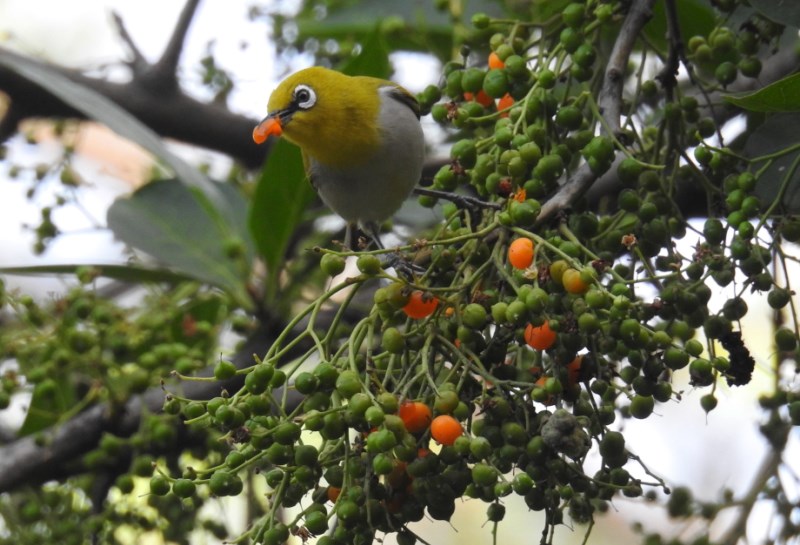
Aye Aye Sir. Look into my White-eye and say you don’t love me.
The Charma-Vriksha tree haven’t got the attention from the naturalists as it should have. It is not known as a keystone species like Ficus nor it is as gorgeous as Bombax. Nevertheless, it occupies a center-stage for the Birds of Delhi during the month of March-April and for brief period during monsoon and winter. If we care to protect this well-adapted tree in the Delhi flora, the avian fauna will definitely thank us flapping their wings.


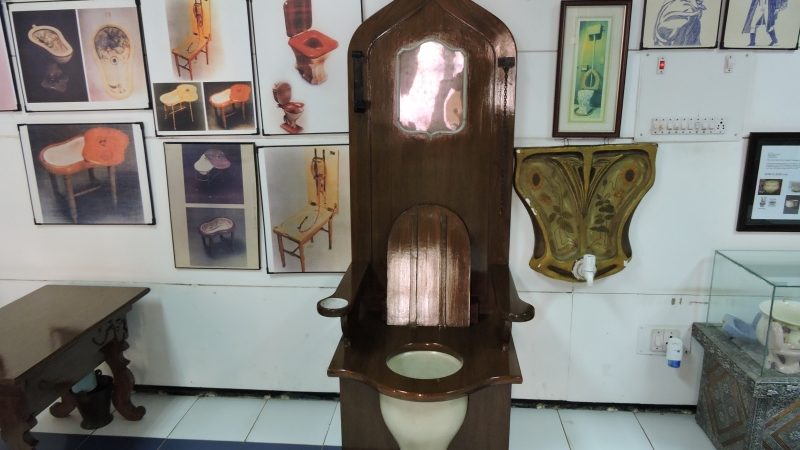
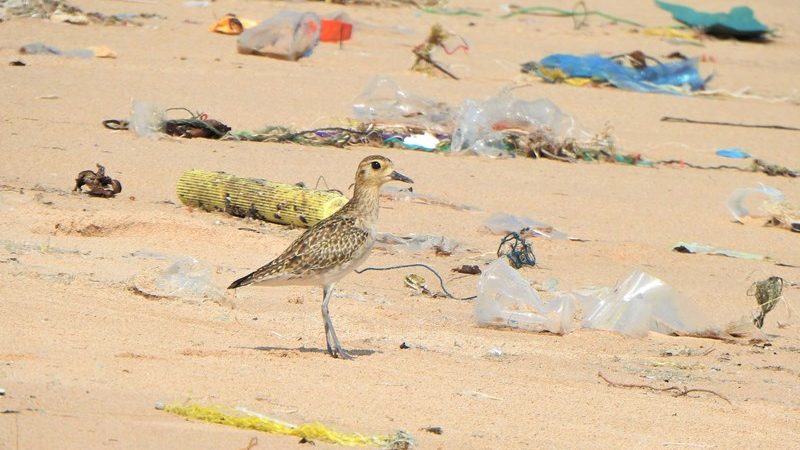
Hey Asani, very nice writeup on the Ehretia tree (I like to call it Goldspot after the orange fizzy drink we used to have some two decades ago!) and its avian visitors.
We have one in the park just outside our quarters in Poorvanchal, JNU campus and it is really a treat to watch! Thanks again, Thejus